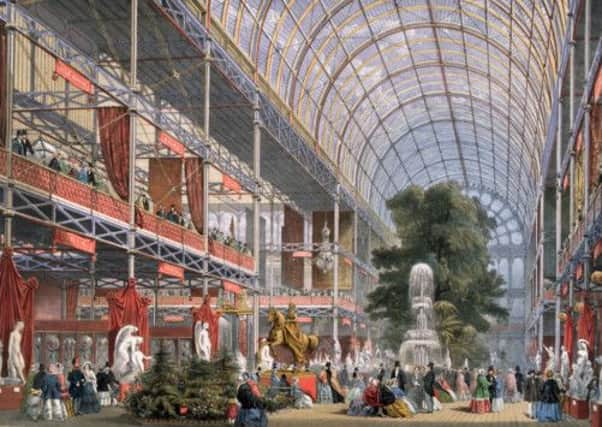Book review: The Memory Palace by Edward Hollis


The Memory Palace: A Book of Lost Interiors
Edward Hollis
Portobello, 352 pp, £25
The Memory Palace is a sort-of sequel to The Secret Lives of Buildings, Edinburgh College of Art lecturer’s debut, which was longlisted for both the Samuel Johnson Prize and the Guardian First Book Award; and this new work surely deserves similar plaudits.
It turns from buildings to the rooms within them, and is concerned not only with the memory of rooms long ago dismantled, disassembled and their contents dispersed (although that is a prominent feature of, for example, Hollis’s account of Marie-Antoinette’s mirrored boudoir or the sets for Tara in Gone With the Wind), but is about how rooms function as memories and memory was once figured as a room.
Advertisement
Hide AdThe lost interiors are not just precise arrangements of bibelots, bric-a-brac, knick-knacks and tchotchkes but the very interiorities of those who once occupied the rooms.
Nobody writes about the human nature of architecture quite as movingly as Hollis. Binding together wonderful digressions on, among other things, the idea of the museum and Big Brother is Hollis’s wistful rumination on his grandmother’s living room: card tables, fireplaces, photographs and a broken hoover are the starting points that take us to the medieval exchequer, the Roman cult of Vesta, the online multi-player game Quake and Crystal Palace.
There is an irony in the very concept of a room: the word derives from a Germanic word meaning space (a meaning preserved in the adjective “roomy”), and was first made cognate with the idea of a chamber purely in a nautical sense. The earliest rooms were always on the move; a notion which Hollis links not just to the royal progress from palace to palace, but to the very distinction between furnishings and dwellings – in French, meubles and immeuble, the moveable and the immoveable. Rooms encode stories: the scorch mark on the top E of the piano in our living room is a silent reminder of where my wife’s great-grandfather once rested his cigarette.
For classical and Renaissance orators, a “memory palace” was a work of mnemonic mental image-making – you assigned meanings to the objects in your palace. It was this technique, for example, that helped the Jesuit priest Matteo Ricci become the first European to learn Chinese. The interconnection between rooms and memories allows Hollis to write, eloquently, about how that link is being eroded. Memory is now in the nebulous Cloud.
In a similar fashion, the way rooms are now focused on a screen rather than a hearth raises questions about how inside and outside are changing places. The room is also a setting, and in terms of places like Versailles, Hollis deconstructs how majesty depends on performance (and includes a hilarious anecdote about how Louis XIV’s loo was mistaken for a private confessional).
As with The Secret Life of Buildings, Hollis is adept at finding surprising stories that join together very different things, a kind of writing similar to the conceit of the Metaphysical poets. He leaps from the Koh-i-noor diamond to the indoor lavatory (and the origin of the phrase “to spend a penny”) via Marx on commodities and the Crystal Palace exhibition.
Advertisement
Hide AdThe series of chapters on the Wunderkammer – the “cabinet of curiosities” which led to the modern museum – are glorious in their haphazard diversity. These were, after all, miniature rooms in which one might find coconuts and clocks, basilisk skeletons and hippo teeth.
Unlike so many writers of narrative non-fiction, Hollis eschews the drift towards academese prose and the dusty hemming and hawing that takes the place of spurious objectivity. Although there are facts in the book, Hollis always looks for the story of the facts.
Advertisement
Hide AdHis prose can be both rich and poetic: for example, this concludes his section on furniture, which has gone from games and accountancy, via the Round Table, the King’s Bench and the Stone of Destiny, to the various refits of the Palace of Westminster: “the yahoos and catcalls of Prime Minister’s Question Time are, in origin, antiphonal singing, as eternal, as changeless, and also as mutable as the palace, the hall, the table, and the crown, and the throne”. A less capable writer would have stuck to the simple list, omitting the elegiac, repeated (and neatly antiphonal) “and”.
There is only one area where it seems to me Hollis misses a trick. His grandmother refers to her home as “the Doll’s House”, and surely these interiors within interiors would be worthy of one of his customary cadenzas?
From the “Nutshell Studies of Unexplained Deaths” – a series of dioramas of murder scenes made by Frances Glessner Lee, and still used to train forensic scientists – to the Wunderkammer-like constructions of Joseph Cornell, it is a surreal field. Indeed, this book would lend itself to e-supplements.
All books have brief indicators of subject matter on the back. Hollis’s reads “History/Architecture”, to which could be added classical culture, popular culture, monarchy, politics, consumerism, memoir, art collecting and more. This is the kind of non-fiction – like the work of WG Sebald or Paul Collins or Rebecca Solnit – that makes fiction seem predictable, thin and uncurious.
Edward Hollis is at the Edinburgh Book Festival on 15 August.